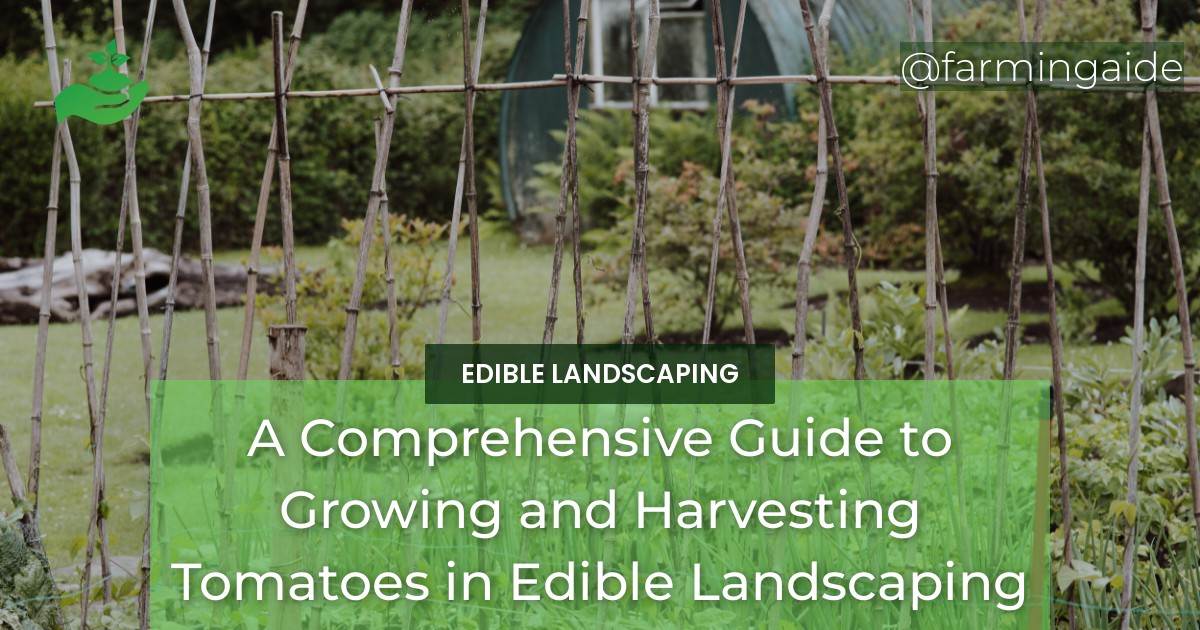When it comes to edible landscaping, growing tomatoes can be a rewarding and delicious endeavor. With proper care and attention, you can harvest juicy, flavorful tomatoes right from your own backyard. Selecting the right tomato varieties is crucial to ensure a successful harvest. Determining the purpose of the tomatoes, considering climate and temperature requirements, space and growth habit, disease resistance, fruit size and shape, as well as flavor and culinary uses are all important factors to consider when choosing the right tomato varieties for edible landscaping.
Selecting the Right Tomato Varieties for Edible Landscaping
Determining the Purpose of the Tomatoes
Before selecting the tomato varieties for your edible landscaping, it’s important to determine their purpose. Are you looking for tomatoes to eat fresh, use in salads, or for canning and preserving? Different varieties have different characteristics that make them suitable for specific purposes.
Considerations for Selecting Tomato Varieties
Climate and Temperature Requirements
Tomatoes thrive in warm weather, so it’s essential to select varieties that are suitable for your climate and temperature. Consider the average temperature range in your region and choose varieties that can tolerate the conditions.
Space and Growth Habit
Tomato plants come in different growth habits, such as determinate and indeterminate varieties. Determinate varieties tend to be more compact and bushy, making them suitable for smaller spaces, while indeterminate varieties are more sprawling and require trellising or staking.
Disease Resistance
Some tomato varieties are bred to be more resistant to common diseases, such as blight and wilt. Choosing disease-resistant varieties can help ensure a healthier crop and reduce the need for chemical treatments.
Fruit Size and Shape
Different tomato varieties produce fruits of various sizes and shapes. Consider your preference and intended use when selecting varieties. Cherry or grape tomatoes are ideal for snacking and salads, while larger beefsteak tomatoes are great for slicing.
Flavor and Culinary Uses
Tomatoes vary in flavor profiles, from sweet and tangy to rich and savory. Consider the taste you desire for your culinary creations and select varieties accordingly. Heirloom tomatoes are known for their unique flavors and are often prized by food enthusiasts.
Popular Tomato Varieties for Edible Landscaping
Cherry or Grape Tomatoes
Cherry or grape tomatoes are small, bite-sized fruits that are perfect for snacking and adding to salads. They are prolific producers and come in various colors, including red, yellow, and even striped varieties.
Heirloom Tomatoes
Heirloom tomatoes are open-pollinated varieties that have been passed down through generations. They come in a range of colors, sizes, and flavors, offering unique and diverse options for edible landscaping.
Roma or Paste Tomatoes
Roma or paste tomatoes are known for their meaty texture and low moisture content, making them ideal for sauces, salsas, and canning. They are often oblong or pear-shaped.
Beefsteak Tomatoes
Beefsteak tomatoes are large, juicy tomatoes that are perfect for slicing and adding to sandwiches and burgers. They come in different colors, including red, pink, and yellow, and can weigh several pounds.
Determinate vs. Indeterminate Varieties
Determinate varieties of tomatoes grow to a predetermined height and set most of their fruit at once, making them suitable for shorter growing seasons and container gardening. Indeterminate varieties continue to grow and produce fruit throughout the season, requiring support and longer growing periods.
Tips for Success with Tomato Varieties in Edible Landscaping
Proper Soil Preparation and Nutrient Requirements
Tomatoes thrive in well-draining soil rich in organic matter. Prepare the soil before planting by adding compost or well-rotted manure to improve its fertility. Regularly fertilize with a balanced tomato fertilizer to provide essential nutrients.
Watering and Irrigation
Tomatoes require consistent and deep watering to develop strong root systems. Water deeply but less frequently to encourage deep root growth and prevent disease issues. Consider using drip irrigation or soaker hoses to deliver water directly to the root zone.
Pruning and Supporting Tomato Plants
Pruning tomato plants helps improve air circulation, reduce disease risk, and concentrate energy on fruit production. Remove suckers, the side shoots that emerge from leaf axils, to maintain a single stem. Provide support, such as stakes or cages, to keep the plants upright.
Pest and Disease Management
Monitor your tomato plants regularly for common pests like aphids, tomato hornworms, and whiteflies. Use organic pest control methods, such as handpicking, insecticidal soaps, or neem oil, to manage pests. Prevent diseases by avoiding overhead watering and providing adequate spacing between plants.
Harvesting and Storing Tomatoes
Tomatoes are ready for harvest when they reach their mature color and firmness. Gently twist or cut the fruits from the vine, leaving a small portion of the stem attached. Store ripe tomatoes at room temperature for a few days or refrigerate for longer shelf life.
Conclusion
Growing and harvesting tomatoes in edible landscaping can be a fulfilling experience. By carefully selecting the right tomato varieties, providing proper care, and following best practices, you can enjoy a bountiful harvest of delicious tomatoes that will enhance your edible landscape and culinary creations.
RELATED ARTICLES:


